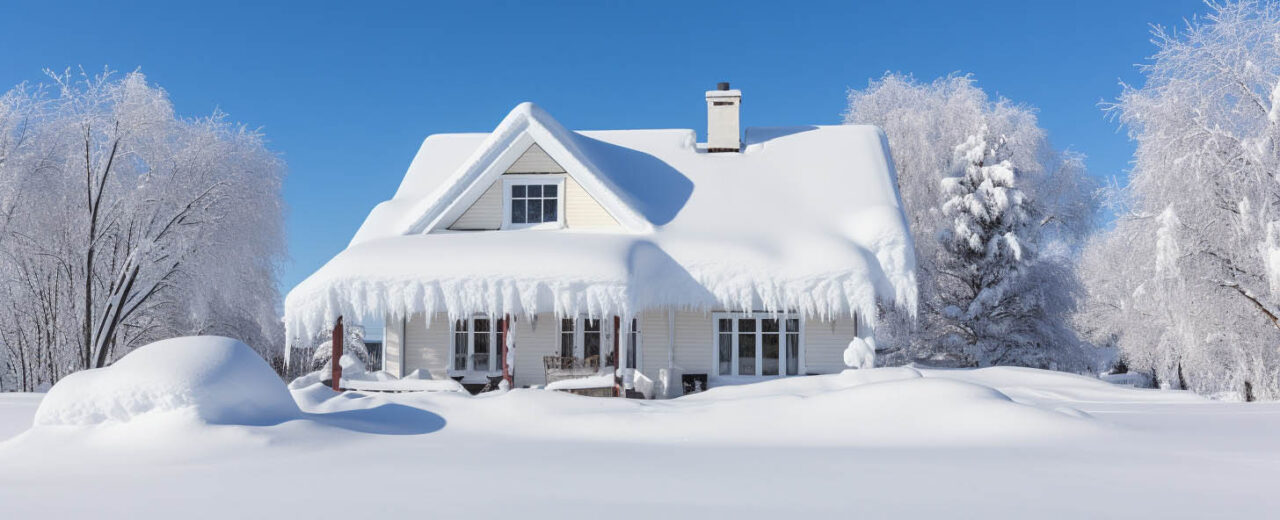Winter is a season of beauty, bringing with it a blanket of snow that covers the landscape. However, for homeowners, it also brings concerns about the structural integrity of their roofs. How much snow can a roof handle? What precautions should be taken to ensure the safety of your home? At The Roofing Center, we understand these concerns and are here to provide you with a detailed guide on the maximum snow load on roofs.
The Science Behind Snow Load
Every roof is designed to handle a specific amount of weight. On average, a roof can support approximately 20 pounds of snow per square foot. However, this capacity can vary based on the region, as areas prone to heavy snowfall often have roofs designed to bear a higher snow load.
Regional Snowfall: How Much Does Your Area Receive?
The amount of snow your region receives plays a crucial role in determining the snow load your roof should handle. For instance, while cities like Los Angeles might not have to worry about snow load, regions in the Midwest, East Coast, or Mountain West should be more vigilant. Syracuse, New York, stands out as one of the snowiest cities in the U.S., with an impressive average of 123.8 inches of snow annually.
The Impact of Snow on Your Roof
A light dusting of snow might not pose a significant threat, but accumulated snow can be a concern. Wet or densely packed snow is particularly problematic due to its weight. If not addressed, accumulated snow can lead to issues like ice dams, sagging roofs, leaks, or even a roof collapse.
Effective Snow Removal Techniques
One of the best strategies to prevent snow accumulation is by maintaining a cold roof. This can be achieved by enhancing the ventilation and insulation in the attic, sealing any cracks, and preventing air leaks. Additionally, using a snow rake can be effective in removing snow from your roof.
For those residing in Bozeman, MT, and seeking professional assistance, The Roofing Center is one of the best Bozeman’s roofing contractors. Our expertise in roof installation in Bozeman ensures that your roof is equipped to handle the challenges of winter.
Determining the Snow Load
To calculate the snow load on your roof, you need to consider the density of the snow. Here’s a quick guide to estimating the weight of different types of snow:
- Fresh snow: 3.75 lbs/cubic ft
- Damp fresh snow: 6.87 lbs/cubic ft
- Settled snow: 15.61 lbs/cubic ft
- Wind-packed snow: 23.41 lbs/cubic ft
- Very wet snow: 46.82 lbs/cubic ft
- Ice: 57.25 lbs/cubic ft
Using these estimates, you can calculate the snow load on a flat roof with the formula: Density (lb/cubic ft) x Depth of snow (ft).
Roof Pitch and Snow
If you’re in an area prone to heavy snowfall, having a steeper roof pitch is beneficial. A roof pitch of at least 1:12 is recommended as it allows snow to slide off more easily.
Addressing Snow on Solar Panels
For homes with solar panels, snow accumulation can hinder their efficiency. A soft brush can be used to gently remove snow from the panels. However, it’s essential to avoid scraping ice, as it can damage the panels.
In Conclusion
Understanding the maximum snow load on your roof is crucial for the safety and longevity of your home. Regular maintenance, timely snow removal, and professional inspections can go a long way in ensuring your roof’s durability. If you’re looking for roofing service in Bozeman or need advice on metal roofing in Bozeman MT, The Roofing Center is here to assist. Stay safe and ensure your roof is winter-ready!


